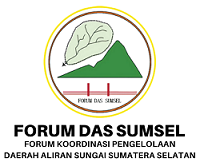The Advantages and Cultivation of Medicinal Plants as a Living Dispensary in Sukajadi Village
Abstract
Indonesia is known as one country with a high diversity of flora. Several plants that grow in Indonesia produce certain compounds as medicines and as the primary raw materials in the pharmaceutical industry. The wealth of natural resources owned should be known by the people of Indonesia and can use them to improve welfare, including maintaining their health. The people of Sukajadi Village, Sungai Rattan District, and Muara Enim Regency need to be informed about the types, benefits, and methods of cultivating medicinal plants and making Live Pharmacies. This knowledge is advantageous to help rural communities overcome health problems with mild symptoms because, during the COVID-19 PANDEMIC, which has been going on for a long time, it turns out to cause concern. People fear contracting the COVID-19 virus, which is very dangerous if they go to hospitals, PUSKESMAS and other health facilities. Knowledge of the types, benefits and availability of live dispensaries in each residential area is expected to help rural communities overcome diseases with only mild symptoms and must continue to seek medical treatment. Medicinal plants are felt to have not been able to overcome the disease, especially for people with serious illnesses.
Full Text:
PDFReferences
Balai Pengkajian Tehnologi Pertanian Sumatera Utara. 2012. Petunjuk Teknis Budidaya Tanaman Jahe.
Badan Perencanaan Pembangunan Nasional. 2000. Sistim Informasi Manajemen Pembangunan di Perdesaan, Jakarta.
Jumin, H. B. 2002. Agronomi. PT. Raja Grafindo Persada. Jakarta.
Maulana, A., Herviyanti, Prasetyo, T.B. 2020. Pengaruh Berbagai Jenia Kapur dalam Aplikasi Pengapuran untuk Memperbaiki Sifat Kimia Ultisol. Jurnal Tanah dan Sumberdaya Lahan Vol.7 No.2 : 209-214.
Moeljanto R. 2003. Khasiat dan Manfaat Daun Sirih, Agromedia Pustaka. Jakarta.
Moghaddasi, S and Verma, S. 2011. Aloe vera Their Chemical Composition and Applications. Int J Biol Med Res. 2(1), 466-471.
Nugraha, S.P., dan Agustiningsih, W.S., 2015. Pelatihan Penanaman Tanaman Obat Keluarga (TOGA). Jurnal Inovasi dan Kewirausahaan Vol.4 No.1: 58-62.
Oboh, G., Bello, F.O., Ademosun, A.O., Akinyemi, A.J., Adewuni, T.M. 2015. Antioxidant, hypolipidemic, and anti-angiotensin-1- converting enzyme properties of lemon (Citrus limon) and lime (Citrus aurantifolia) juices. Comp. Clin. Pathol. 24: 1395-1406.
Özcan M, dan Chalchat JC. 2002. Essential oil composition of Ocimum basilicum L. and Ocimum minimum L. in Turkey. Czech J. Food Sci. 20: 223–228.
Purwakusumah, E.D.; Royani, L.; Rafi, M. 2016. Evaluasi Aktivitas Antioksidan dan Perubahan Metabolit Sekunder Mayor Temulawak (Curcuma xanthorriza) pada Umur Rimpang yang Berbeda. Jurnal Jamu Indonesia Vo.1. No.1: 10–17.
Rukayadi, Y., Yong, D. and JK. Hwang. 2006. In vitro anticandidal activity of xanthorrhizol isolated from Curcuma xanthorrhiza Roxb. J. Antimicrob Chemother. 132:1-4.
Sajjadi SE. 2006. Analysis of the essential oils of two cultivated basil (Ocimum basilicum L.) from Iran. Daru14(3): 128-130.
San, C.Y. dan Iskandar, Y. 2018. Studi Kandungan Kimia dam Aktivitas Farmakologi Tanaman Kunyit (Curcuma longa L.). Juenal Farmaka Suplemen Vol.16 No.2: 547-555.
Silalahi, M. 2020. Pemanfaatan Citrus aurantifolia (Christm. et Panz.) sebagai Bahan Pangan dan Obat serta Bioaktivitas Pemanfaatan Citrus aurantifolia (Christm. et Panz.) sebagai Bahan Pangan dan Obat serta Bioaktivitas. Jurnal Sainmatik Vol.17 No.1. DOI 10.31851/sainmatika.v17i1.3637 https://jurnal.univpgri-palembang.ac.id/index.php/sainmatik
Violeta, Y., Wantini, S., dan Sulistianingsih, E. 2013. Perbandingan Uji Efektivitas Air Perasan Lengkuas Merah (Alpinia purpurata K. Schum) Dengan Air Perasan Lengkuas Putih (Alpinia galnga L. Wild) Terhadap Pertumbuhan Jamur Malassezia furfur Penyebab Panu. Jurnal Analis Kesehatan: Vol.2 No.2: 2282-2289.
Widiyastuti, Y., Haryanti, S., dan Subositi, D. 2013. Karakterisasi Morfologi dan Kandungan Minyak Atsiri Beberapa Jenis Sirih (Piper sp.). Journal Penelitian dan Pengembangan Departemen Kesehatan Vol.6 No.2: 86-93.
DOI: https://doi.org/10.32502/altifani.v2i2.4773
Refbacks
- There are currently no refbacks.
Copyright (c) 2022 Altifani Journal: International Journal of Community Engagement
Indexed by:
Altifani Journal: International Journal of Community Engagement
Diterbitkan oleh Fakultas Pertanian, Universitas Muhammadiyah Palembang
Contact Person:
Rika Puspita Sari, M.Si (HP/WA: +62 813-7490-0341)
Klinik Publikasi Pertanian, Faculty of Agriculture, Universitas Muhamamdiyah Palembang
JL. Jend.A.Yani 13 Ulu Palembang, South Sumatra, Indonesia
Tel. (+62)711-511731; Email: kppfpump@gmail.com; Website: https://jurnal.um-palembang.ac.id/altifani

This work is licensed under a Creative Commons Attribution 4.0 International License.









.png)
14.png)





